“Forest and the Shore” by Keith Christmas is remarkable. In his essay for Gather In The Mushrooms, compiler, author and Saint Etienne member Bob Stanley says it is “as evocative as its title. The song has a deeply wooded sound, like a cross between Serge Gainsbourg’s “Ballade de Melody Nelson” and Ralph Vaughan Williams.” To this can be added the brooding, dramatic melancholy of Scott Walker’s “The Seventh Seal.”
Despite the grandeur of “Forest and the Shore” – and the astounding Richard Thompson-esque, Tom Verlaine-predicting guitar solo taking it to its close – Gather In The Mushrooms: The British Folk Underground 1969-1975 is ostensibly an 18-track collection of British folk recordings. Or, more accurately, folk-rooted or folk-influenced recordings. This is what was dubbed “acid folk” during the late 1990s. The period this release looks at saw an escape-the-city realignment: exemplified by the (not compiled) Incredible String Band setting up camp in a group of Scottish cottages or Vashti Bunyan decamping to The Hebrides.
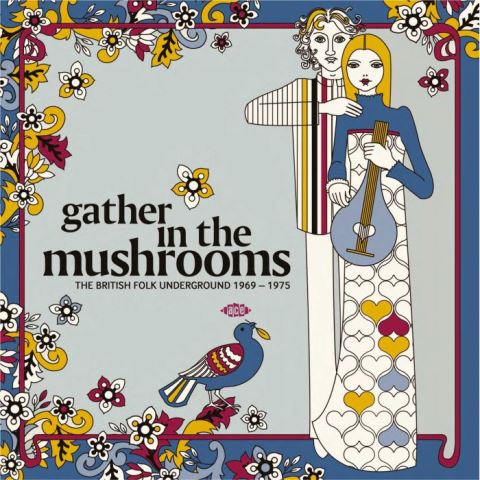 Yet however it was, some level of engagement with the music business, technology and the rest of it was needed to make records. Someone had to buy tape, say. Or book a pressing plant. Etc. A lot went into “Forest and the Shore.” It was originally the final track on Pigmy, former David Bowie associate Keith Christmas’ 1971 third album. The London Symphony Orchestra appear on most of its tracks. The choral and string arrangements are by Robert Kirby, best known for his work with Nick Drake. The organ on “Forest and the Shore” is played by the post-Zombies and then-Argent leader Rod Argent. The bassist is Calvin Samuels, who soon went on to join Stephen Stills in Manassas.
Yet however it was, some level of engagement with the music business, technology and the rest of it was needed to make records. Someone had to buy tape, say. Or book a pressing plant. Etc. A lot went into “Forest and the Shore.” It was originally the final track on Pigmy, former David Bowie associate Keith Christmas’ 1971 third album. The London Symphony Orchestra appear on most of its tracks. The choral and string arrangements are by Robert Kirby, best known for his work with Nick Drake. The organ on “Forest and the Shore” is played by the post-Zombies and then-Argent leader Rod Argent. The bassist is Calvin Samuels, who soon went on to join Stephen Stills in Manassas.
Obviously, not everything on Gather In The Mushrooms is as opulent a creation as “Forest and the Shore.” Oberon’s desolate “Nottanum Town” was recorded in an Oxford classroom during the summer holidays and ended up on a self-issued album of which 99 copies were pressed in 1971. Christine Quayle’s chillingly intense “The Seagulls Scream” is a disembodied voice, a guitar (maybe a mandolin?) and ambient sounds. It was first heard on Sounds Like West Cornwall, a compilation released by an independent Cornish label. At the other end of the scale, Sandy Denny’s post-Fairport Convention vehicle Fotheringay – represented here by the appropriately frosty “Winter Winds” – knew all about the music business and how it did, or did not, work.
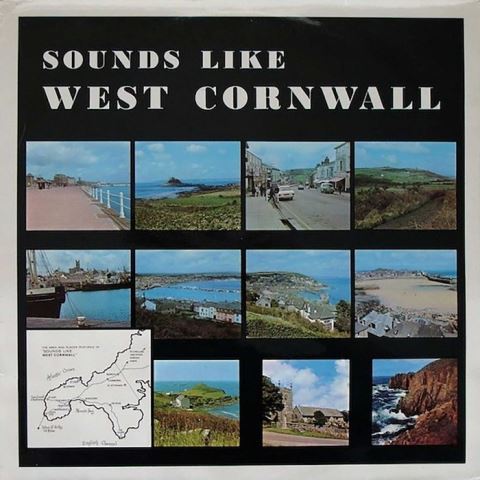 Feel and purpose count here – a shared artistic intent – not the various forms of infrastructure around what’s collected. If how individual tracks were conceived did matter, opening cut “Corn Rigs” would be cancelled out due to the resolute lack of anything organic in its creation. It was credited to Magnet, an aggregation specifically assembled to enter a recording studio to make music for the film The Wicker Man. Its creation is as spontaneous as that of The Monkees. Nonetheless, it is as creepy, as tangibly unprocessed as anything which lurked in the murkier depths of the UK’s folk scene.
Feel and purpose count here – a shared artistic intent – not the various forms of infrastructure around what’s collected. If how individual tracks were conceived did matter, opening cut “Corn Rigs” would be cancelled out due to the resolute lack of anything organic in its creation. It was credited to Magnet, an aggregation specifically assembled to enter a recording studio to make music for the film The Wicker Man. Its creation is as spontaneous as that of The Monkees. Nonetheless, it is as creepy, as tangibly unprocessed as anything which lurked in the murkier depths of the UK’s folk scene.
Just as Magnet were a construct, so was – whatever its appositeness as a identifier – acid folk. Post-graduate-style research would be needed to pinpoint exactly when the term was coined and, initially, for what. Hippie folk had sufficed up to the widespread adoption of acid folk (or analogous identifier freak folk).
And in the spirit of this putative research, Gather In The Mushrooms turns out to be a form of investigation of the evolution of acid folk. In 2004, the now-defunct Sanctuary label issued the original Gather In The Mushrooms collection. Also compiled by Stanley, it had the same front-cover image as the new collection (the colour schemes have been altered for the new release). As he says now, what was compiled in 2004 “proved influential in the 00s neo-folk boom (Devendra Banhart, Johanna Newsom, Alisdair Roberts, Tunng, et al).” Closer to home and earlier, it also proved influential on Stanley’s band Saint Etienne’s pivotal, perception-shifting 1994 album Tiger Bay. Crucially, what’s heard here and now is as much about a raft of music from 20 or 30 years ago as it is about the early Seventies.
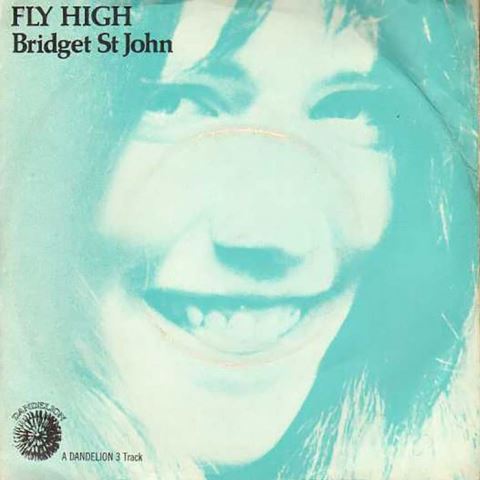 That original, 2004, Gather In The Mushrooms had a follow-up set: 2006’s Early Morning Hush. The new …Mushrooms collects tracks from each and adds selections not heard in 2004 and 2006: Fotheringay’s “Winter Winds,” Christine Quayle “The Seagulls Scream” amongst them. Keith Christmas’ “Forest and the Shore” had been on Early Morning Hush.
That original, 2004, Gather In The Mushrooms had a follow-up set: 2006’s Early Morning Hush. The new …Mushrooms collects tracks from each and adds selections not heard in 2004 and 2006: Fotheringay’s “Winter Winds,” Christine Quayle “The Seagulls Scream” amongst them. Keith Christmas’ “Forest and the Shore” had been on Early Morning Hush.
It is welcome that Gather In The Mushrooms has been refreshed. Everything here has to be heard. There is no filler. But setting aside the multi-volume grey area Lammas Night Laments series of CDrs which leaked out in 2005 and 2006, there is a sense that only so much of this type of thing can be compiled. The menu is limited. Viz: “Corn Riggs” was also on the 2020 3-CD set Sumer Is Icumen In (The Pagan Sound Of British And Irish Folk 1966-75); “The Seagulls Scream” was on the 2021 3-CD set Dust On The Nettles (A Journey Through The British Underground Folk Scene 1967-1972). Also on the current …Mushrooms, Trader Horne’s “Morning Way” and Bridget St. John’s “Fly High” were on the 2022 3-CD set Deep In The Woods (Pastoral Psychedelia & Funky Folk 1968-1975). “Forest and the Shore” cropped up on 2018’s fantastic Robert Kirby overview When The Day Is Done. Anne Briggs, Comus and Forest are collected here and different tracks by them appear on most of the aforementioned releases. Is there an inevitability about what is on collections of this nature?
The point, then, is not how much can be drawn from this particular well but whether the outcome of a new immersion works. Does it hold together? Does it feel definitive? Is there a unifying ethos? Is there a listening flow? Is it presented with attention, care and diligence? Does it exude enthusiasm? Is there an innate sense of style? As the answer to all of these is yes, the new Gather In The Mushrooms is the ultimate – one-stop – gateway into this particular musical world.
- Next week: Pilot - The Singles Collection. The Seventies power-poppers on 45.
- More reissue reviews on theartsdesk
- Kieron Tyler’s website

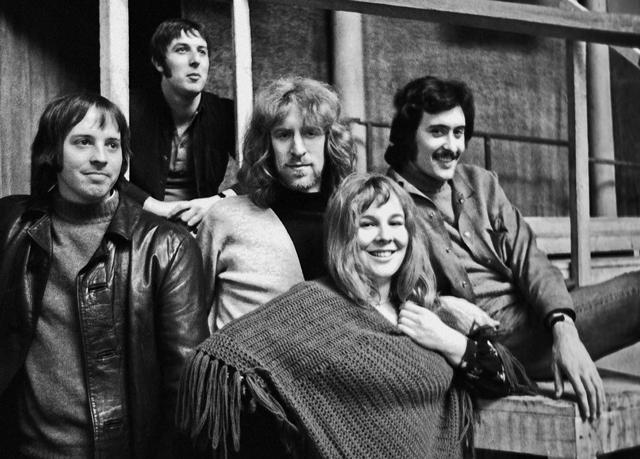








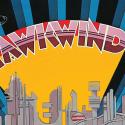



Add comment